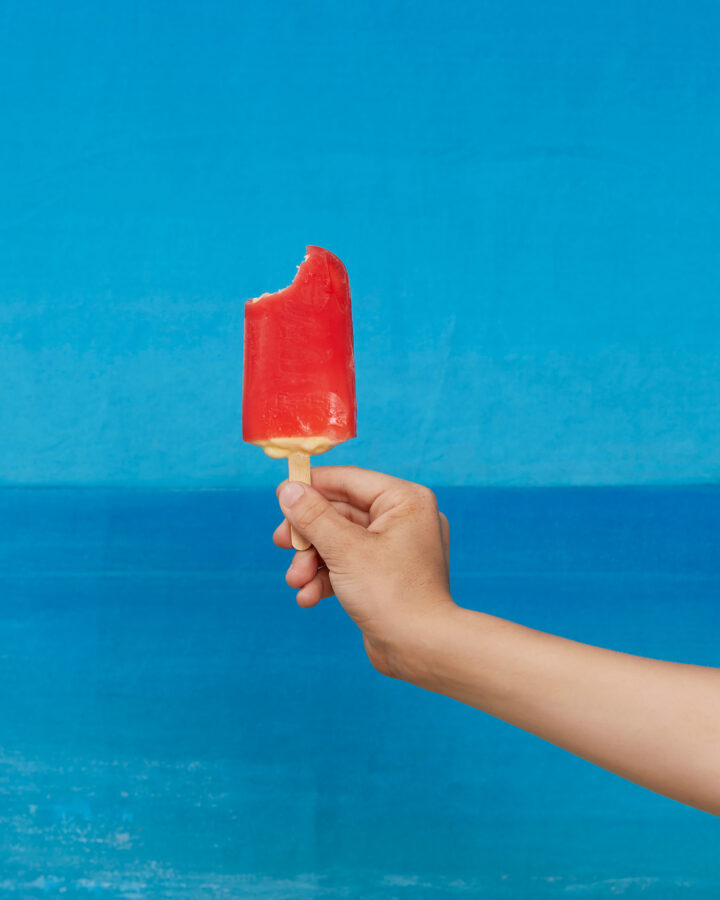How Artificial Sweeteners Increase Hunger (And May Lead to Fat Storage)

A common sweetener found in everything from protein shakes to toothpaste may actually make you hungrier and cause your body to store fat.
You’ve swapped your soda for a “zero” version, skipped the sugar in your morning coffee, and maybe even started scanning ingredient labels for stealthy sweeteners. Smart, right?
Not so fast.
A new study in Nature Metabolism investigated how sucralose, one of the most common artificial sweeteners found in sugar-free snacks, drinks, and protein powders, might not be the weight-management solution many hoped it would be. In fact, it may be doing the opposite of what you want—by triggering hunger rather than satisfying it.
Sweet Without the Satisfaction
Sucralose is a synthetic sweetener derived from sucrose, what most of us know as table sugar. By chemically replacing parts of the sugar molecule with chlorine atoms, scientists created a compound roughly 600 times sweeter than sugar, but with virtually zero calories. That’s why it shows up in everything from diet sodas and baked goods to flavored water, chewing gum, protein powders, vitamins, and even mouthwash.
Brands rarely call it out. Instead, you’ll find sucralose hiding in ingredient lists under names like:
- Splenda®
- E955 (its European food additive code)
- 1′,4,6′-trichlorogalactosucrose,
- Trichlorosucrose
- Or simply “sucralose” on nutrition panels.
Because it’s heat-stable, it’s used in both processed foods and home baking products. If a label says “sugar-free” or “zero added sugar,” chances are high it contains sucralose or a similar artificial sweetener.
How Sucralose Impacts Your Brain and Body
In the Nature Metabolism study, researchers at the University of Southern California looked at how sucralose affects brain activity. Unlike real sugar, which delivers both sweetness and calories, sucralose provides the taste without the energy. This mismatch seems to confuse the brain, especially the hypothalamus, a region that regulates hunger, metabolism, and [en-er-jee bal-uhns]nounThe relationship between calories consumed and expended.Learn More.
“Sucralose activates the area in the brain that regulates hunger, and that activation, in turn, is linked to greater ratings of hunger,” said lead study author Dr. Katie Page, an associate professor of medicine and pediatrics and director of the Diabetes and Obesity Research Institute at the University of Southern California’s Keck School of Medicine in Los Angeles.
When the brain senses sweetness but doesn’t get the fuel it expects, the hypothalamus reacts by ramping up hunger signals. This effect was especially pronounced in women and individuals living with obesity. In other words: artificial sweetness without calories may make your brain more likely to send you reaching for snacks, not fewer of them.
The study also found that sucralose altered the brain’s functional connections between areas that regulate reward, motivation, and satiety. Over time, this disruption may make it harder to recognize when you’re truly full, and easier to overeat.
So while artificial sweeteners have been marketed as diet-friendly and blood-sugar safe, this research suggests that the brain’s relationship with sweetness is more complex than we thought. When your brain expects a reward and doesn’t get one, it might just keep pushing for more.
Does Sucralose Make You Store Fat?
While sucralose doesn’t directly cause fat gain like excess calories do, growing evidence shows it may actively promote fat storage by altering hunger signals, metabolism, and energy efficiency, even in the absence of overeating.
Here’s how:
- It Increases Appetite: As shown in the Nature Metabolism study, sucralose can stimulate areas of the brain involved in hunger and reward, especially the hypothalamus, without delivering the expected energy. This mismatch can lead to increased appetite and more frequent snacking, which may tip your energy balance toward fat gain over time.
- It Encourages Overeating: By intensifying sweet preferences and disrupting satiety cues, sucralose may make it harder to stop eating, especially when you’re around hyper-palatable foods. Some researchers believe this pattern, sweetness without satisfaction, can encourage overeating even if the sweetener itself has no calories.
- It Disrupts Your Gut [mahy-kroh-bahy-ohm]nounThe community of microorganisms (bacteria, viruses, fungi) living in a particular environment, especially the gut.Learn More: Earlier studies have shown that sucralose may negatively alter gut bacteria, which play a critical role in metabolism, [in-suh-lin sen-si-tiv-i-tee]nounHow effectively your body uses insulin, which regulates blood sugar levelsLearn More, and fat storage. An imbalanced microbiome can increase [in-fluh-mey-shuhn]nounYour body’s response to an illness, injury or something that doesn’t belong in your body (like germs or toxic chemicals).Learn More and shift the body toward energy conservation and fat accumulation.
- It May Interfere with Insulin Signaling: While sucralose doesn’t raise blood sugar directly, there’s evidence that it might affect insulin signaling, especially when consumed with carbohydrates. Impaired insulin response can promote fat storage and make it harder for your body to use fuel efficiently.
- It May Increase Fat Mass (Even Without Increased Calories): In a 2021 British Journal of Nutrition study, rats given sucralose over 7 weeks gained more body fat and showed signs of glucose intolerance even though their total calorie intake didn’t change. The animals stored more of the calories they consumed as fat, a metabolic shift that mirrors what’s been observed with other artificial sweeteners.
Sucralose may interact with your brain, gut, and metabolism in a way that increases the odds of fat storage, especially if you’re using it regularly to suppress hunger or replace real food. Pay attention to how it affects your appetite and energy levels and consider experimenting with whole-food alternatives or going unsweetened for a stretch to let your system recalibrate.
What About Other Sweeteners?
Sucralose isn’t alone in this effect. Emerging research shows that other artificial sweeteners may also confuse your brain and body’s hunger signals:
- Aspartame: Has been shown to influence brain chemicals related to appetite and mood. Some people report stronger cravings and mood swings.
- Saccharin: Linked to changes in the gut microbiome, which could affect glucose control and metabolism.
- Acesulfame Potassium (Ace-K): Early studies suggest potential metabolic impacts, but more research is needed.
The common thread? Sweetness without calories can trick your brain, potentially leading to overeating, glucose dysregulation, and cravings, especially in those already managing weight or metabolic health.
Where Is Sucralose Hiding?
Even if you’re not ripping open yellow Splenda® packets, you might still be consuming sucralose daily—often without realizing it. Because it’s cheap, ultra-sweet, and heat-stable, sucralose is added to thousands of foods and products marketed as sugar-free, low-carb, keto, or “healthy.”
Here’s where it most commonly shows up:
Drinks
- Diet and “zero” sodas
- Flavored waters and sports drinks
- Electrolyte powders and hydration tablets
- Energy drinks and canned coffees
- Drinkable yogurt and protein shakes
Packaged & “Health” Foods
- Protein powders and meal replacement drinks
- Low-sugar or “keto” protein bars
- Sugar-free yogurts and puddings
- Frozen desserts labeled “no sugar added”
- Baked goods marketed as low-carb or diabetic-friendly
Everyday Add-Ons
- Sugar-free gum and mints
- Syrups for coffee (including sugar-free versions at coffee chains)
- No-calorie sweetener packets (Splenda® is sucralose)
- Reduced-calorie ketchup, salad dressings, and sauces
- “Healthy” cereals and granolas that boast no added sugar
Non-Food Products
- Chewable vitamins and supplements (especially gummies)
- Over-the-counter medications
- Toothpaste and mouthwash
- Lip balms and flavored personal care items
Want to really know what you’re consuming? The simplest first step is to read ingredient labels, even on products that seem healthy. If a label says “sugar-free,” “zero sugar,” “low carb,” or “keto,” there’s a good chance it contains sucralose or another artificial sweetener like aspartame or Ace-K. Look for “sucralose” or its additive code E955 on ingredient lists, usually toward the end. Swapping out artificially sweetened items for options with natural sweetness (like fruit, dates, or honey) or no added sweetener at all can help your body reset—and your brain recalibrate what “sweet” actually feels like.
If you’re trying to support your [helth-span]nounThe number of years you live in good health, free from chronic illness or disability.Learn More through better nutrition, it’s not just about cutting sugar or calories; it’s about not letting the workaround become the new problem. Here are a few ways to retrain your taste buds to crave less sugar.
Sucralose may not be the free pass we once thought. For some, it may even sabotage efforts to reduce hunger, curb cravings, and regulate weight. That’s why it’s worth experimenting: try reducing your use of artificial sweeteners and replacing them with naturally sweet whole foods or no sweetness at all. Your taste buds, and your appetite, may recalibrate more quickly than you expect.
The information provided in this article is for educational and informational purposes only and is not intended as health, medical, or financial advice. Do not use this information to diagnose or treat any health condition. Always consult a qualified healthcare provider regarding any questions you may have about a medical condition or health objectives. Read our disclaimers.

